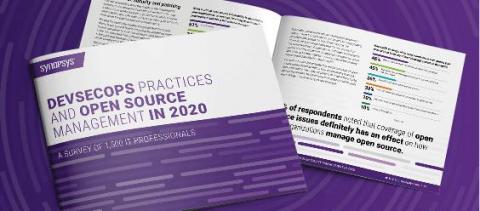Six key findings from the 'DevSecOps Practices and Open Source Management in 2020' report
This week Synopsys released the “DevSecOps Practices and Open Source Management in 2020” report, findings from a survey of 1,500 IT professionals working in cyber security, software development, software engineering, and web development. The report explores the strategies that organizations around the world are using to address open source vulnerability management, as well as the problem of outdated or abandoned open source components in commercial code.




